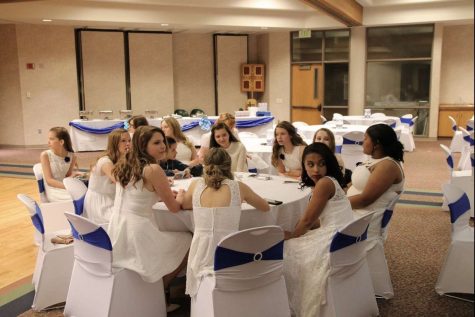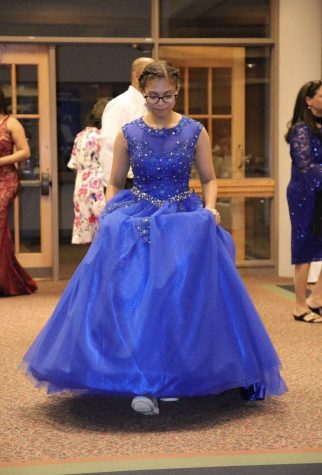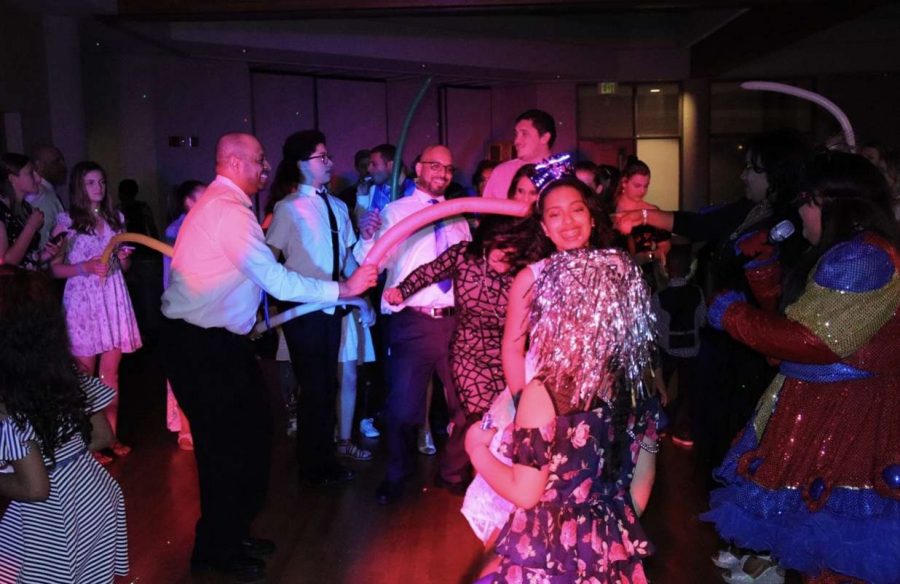A quinceañera is more than just a big dress and a party; there are many interesting traditions that surround them. Lots of preparation and hard work is put into having a quienceñera.
The roots of quinceañeras can be traced back to early Mesoamerica. The Aztec and Toltec civilizations viewed the age of fifteen as the age a girl could start having children. When the Spanish conquered Mesoamerica, fifteen years old came to symbolize the year a female could start getting married. Now, modern quinceañeras have shifted the focus to a celebration honoring the transition from childhood to womanhood.
Lavish receptions and extravagant dresses usually come to mind when thinking about a quinceañera, but there are many more special traditions that can take place. There are no requirements on what rituals a quinceañera must have, so each one is unique in its own way.
Many quinceañeras start with a religious celebration. This tradition was initiated due to Catholicism being popular in Latin America. The girl being celebrated is usually given gifts like a bible or a tiara during the ceremony.
Sophomore Paige Bias-White celebrated her Quinceañera in January 2021. She had a mass before her reception because her family is Catholic, and only her family was allowed to attend. During this time, Bias-White was given a gold ring from her grandma with “fifteen” inscribed on it, and she also gave a speech.
“I gave a speech to my parents and to God about how I’m ready to jump into womanhood,” Bias-White said.
Not everyone has a religious ceremony, though. Senior Dalia Khalafalla decided to opt-out of having one at her quinceañera. She is not Catholic, so the tradition was not as important to her. Instead, she only had a reception.

Usually, a quinceañera will have damas or a “Court of Honor”. This includes fourteen young people who are important in the celebrant’s life. The number fourteen is symbolic because the birthday girl is supposed to be the fifteenth person on the court, a nod to the age she is turning.
Bias-White chose mostly family to be her damas: her godmother, her godmother’s husband, her two aunts, and her sisters were all picked. Khalafalla, on the other hand, picked her friends, cousin, and neighbors to be on her Court of Honor.
“The whole thing is surrounded by the number fifteen,” Khalafalla said. “They [the damas] have to be fifteen or under.”
Another very common tradition at a quinceañera reception is a choreographed dance. These dances are done with important people in the celebrant’s life. The dance can come in many forms. Some choose to make it funny and light-hearted, while others choose to keep it serious and meaningful.
Khallafala had a choreographed dance with her dad. They danced the bachata, which originated in the Dominican Republic. Bachata is a dance style with very basic steps to a four-step count while the dance partners face each other.
In order to prepare for her special dance, Bias-White and her damas went to dance lessons in Kansas City, which is where her quinceñera took place. Bias-White’s second cousin, who owns a dance studio there, offered to choreograph the dance and opened her studio for their lessons.

One of the biggest traditions for quinceañeras is the ball-gown style dress the birthday girl wears. The purpose of the extravagant dress is to draw attention to the girl and make her feel like a princess. It also shows that she is ready to dress more maturely as a woman.
The decision of what dress to pick is a difficult one. Bias-White chose to look in stores for her dress. She went shopping with her godmother and grandma and eventually selected a dark blue one with gold lace from a store in Kansas City. Bias-White said the dress was fun, but she would always get it stuck trying to get in and out of cars.
Khalafalla, instead, chose to shop for her dress online. Her decision was tough though because she and her mother disagreed on what color the dress should be.
“I wanted a navy blue and my mom wanted a sky blue. We just came to the agreement of a royal blue,” Khalafalla said.
The Court of Honor also wears formal wear to match the dress, similar to a wedding. Usually, the girls on the court will wear short dresses, while the guys will wear dress pants and bowties. Khalafalla had her damas wear white dresses with blue flowers.
Quinceañeras are very important events in the lives of Latina girls because it is the defining moment when they become treated like an adult. In a world that is becoming more diverse, it is important to understand what a quinceañera is and the traditions that surround it.
“I think people should try to understand it better,” Bias-White said. “They just think it’s a big party where you dress up, when really it’s learning more about yourself and your culture, and getting ready to take the next step in life.”











